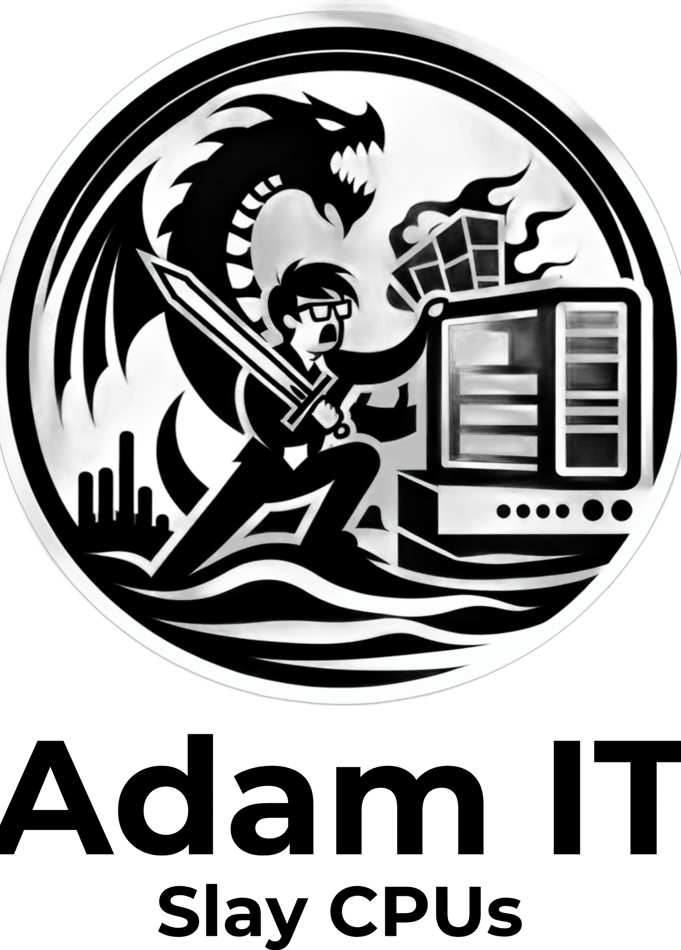A Basic Guide to PowerShell: Automating Simple Tasks and Auto-Running Scripts
A Basic Guide to PowerShell: Automating Simple Tasks and Auto-Running Scripts. The best way to learn is to dive in.
THE BASICS
Adam Grunden
2/18/20244 min read


Let's talk about Windows automation
PowerShell is a powerful scripting language developed by Microsoft that is designed to automate administrative tasks and streamline workflows. Whether you are a system administrator, developer, or IT professional, learning PowerShell can greatly enhance your productivity and efficiency. In this guide, we will explore the basics of PowerShell and how to best utilize it to automate simple tasks and auto-run scripts.
What is PowerShell?
PowerShell is a command-line shell and scripting language built on the .NET framework. It provides a rich set of tools and commands that allow users to interact with and manage various aspects of their Windows environment. PowerShell is especially useful for automating repetitive tasks, managing system configurations, and performing administrative tasks.
Getting Started with PowerShell
To start using PowerShell, you can simply open the PowerShell console or use the PowerShell Integrated Scripting Environment (ISE), which provides a more user-friendly interface for writing and executing scripts. Once you have opened PowerShell, you can start entering commands and executing scripts.
Writing PowerShell Scripts
PowerShell scripts are essentially a series of commands written in a text file with a .ps1 extension. These scripts can be executed by running the script file or by copying and pasting the commands into the PowerShell console. When writing PowerShell scripts, it is important to follow best practices such as using meaningful variable names, adding comments for clarity, and organizing your code into functions.
Automating Simple Tasks
One of the main advantages of PowerShell is its ability to automate repetitive tasks. For example, you can use PowerShell to automate tasks such as creating user accounts, managing Active Directory, or configuring network settings. By writing scripts that perform these tasks, you can save time and reduce the risk of human error.
When automating tasks with PowerShell, it is important to break down the task into smaller steps and use PowerShell commands and functions to perform each step. You can also use loops and conditional statements to handle different scenarios and make your scripts more flexible.
Auto-Running Scripts
PowerShell provides several options for auto-running scripts. One common method is to use the Windows Task Scheduler to schedule scripts to run at specific times or intervals. This is useful for tasks that need to be performed regularly, such as generating reports or backing up data.
Another option is to use PowerShell profiles, which are script files that are automatically loaded when PowerShell starts. You can use profiles to define functions, variables, and aliases that are available every time you open PowerShell. This allows you to customize your PowerShell environment and automatically run specific scripts when PowerShell starts.
Thoughts before you try commands
PowerShell is a versatile scripting language that can greatly simplify and automate administrative tasks. By learning PowerShell and utilizing its features effectively, you can save time, increase productivity, and streamline your workflows. Whether you are a beginner or an experienced user, mastering PowerShell can be a valuable skill that will benefit you in various IT roles.
Remember to practice writing scripts, explore the extensive PowerShell documentation, and join online communities to learn from others and share your knowledge. With dedication and practice, you can become proficient in PowerShell and unlock its full potential for automating simple tasks and improving your workflow.
Commands
A comprehensive list of PowerShell commands is quite an extensive task due to the vast number of cmdlets, functions, and scripts that PowerShell supports. PowerShell commands can be categorized into cmdlets, functions, workflow commands, and aliases. Cmdlets are the native commands in the PowerShell environment, and they follow a Verb-Noun naming pattern, such as Get-Help, Set-Item, Invoke-Command, etc.
Here's a basic structure of how you can categorize PowerShell commands, along with some examples in each category try them out and see what you can automate:
1. Cmdlets
Cmdlets are the core commands within PowerShell designed for a specific function, following the Verb-Noun naming convention.
General Management: Get-Command, Get-Help, Get-Item
Service Management: Get-Service, Start-Service, Stop-Service
Process Management: Get-Process, Start-Process, Stop-Process
File and Folder Management: Get-ChildItem, Remove-Item, New-Item
Networking: Test-Connection, Get-NetIPAddress
Security and Compliance: Get-Acl, Set-Acl, Get-PfxCertificate
2. Functions
Functions in PowerShell are blocks of code that perform a specific task and can return a value. They can be built-in or user-defined.
Built-in Functions: Example functions include workflow-related commands and advanced functions created by PowerShell or loaded from modules.
User-Defined Functions: Functions that you or others write to perform specific tasks not covered by built-in cmdlets or functions.
3. Workflow Commands
Workflows allow for long-running tasks and parallel processing.
Workflow Management: Defined using the workflow keyword, these commands can execute tasks in parallel, resume after reboots, and persist in state.
4. Aliases
Aliases are alternate names for cmdlets or commands. They provide a way to call commands by different names.
Common Aliases: dir (alias for Get-ChildItem), cls (alias for Clear-Host), del (alias for Remove-Item)
5. Modules
Modules are packages that contain PowerShell commands, including cmdlets, functions, workflows, and variables.
Module Management: Get-Module, Import-Module, Remove-Module
Discovering Commands
To discover commands within PowerShell, you can use the Get-Command cmdlet, which lists all cmdlets, functions, workflows, and aliases available in your session. You can also filter commands by type, module, or name.
For example:
To list all commands: Get-Command
To list all cmdlets that pertain to services: Get-Command -Noun Service
To find commands related to a specific topic: Get-Command keyword
Conclusion
This list is far from comprehensive but provides a structured starting point. PowerShell's capabilities are vast, and the best way to learn about available commands is to explore them within the PowerShell environment, use Get-Command to discover new commands, and Get-Help <cmdlet name> to learn about what each command does and how to use it


Contacts
adamgrunden@gmail.com
